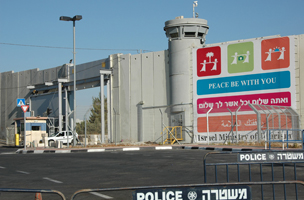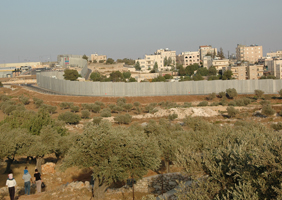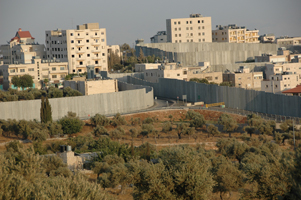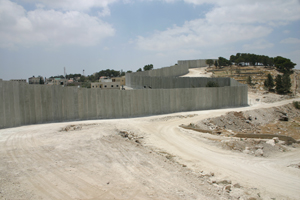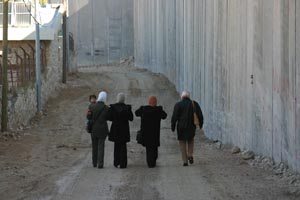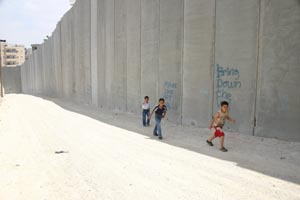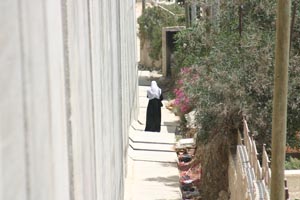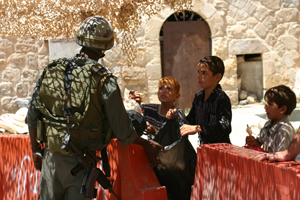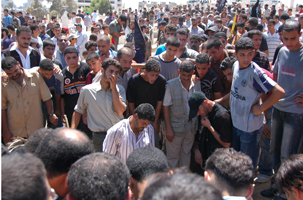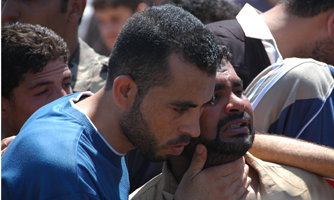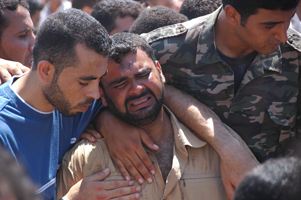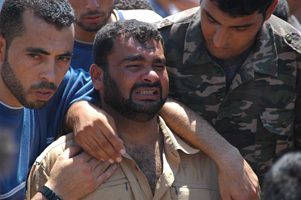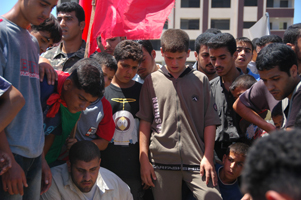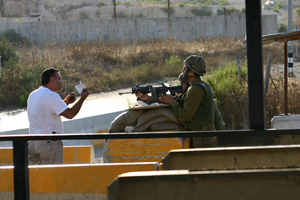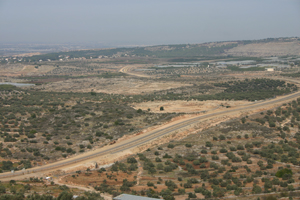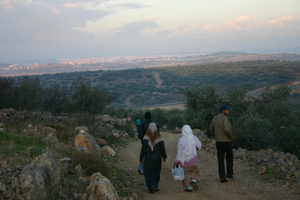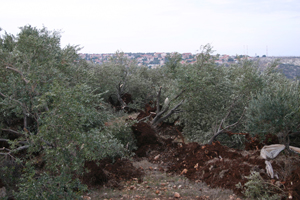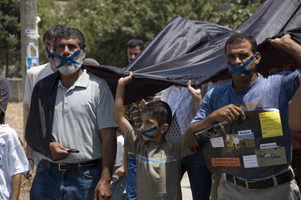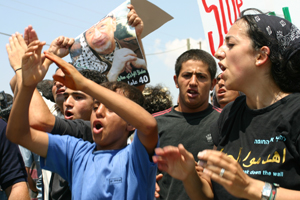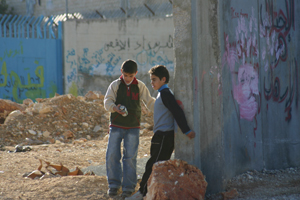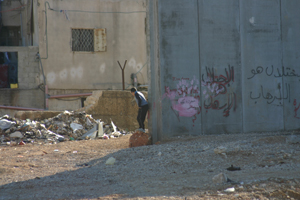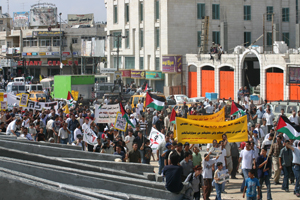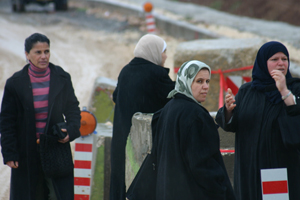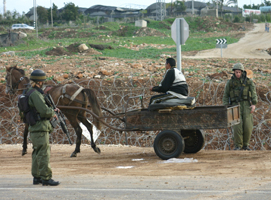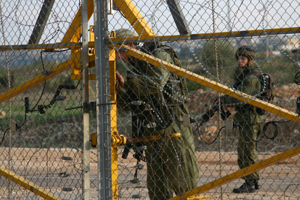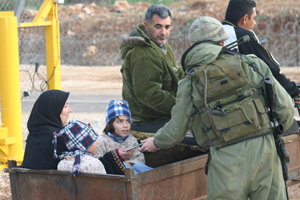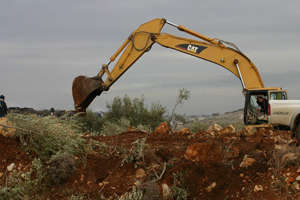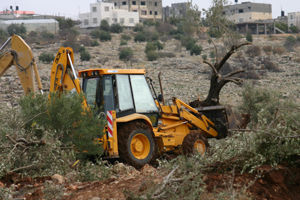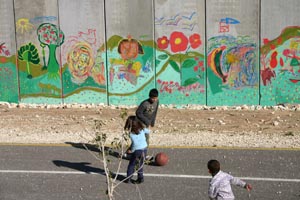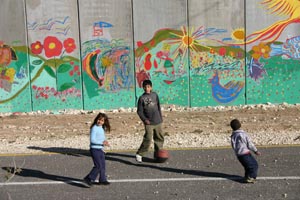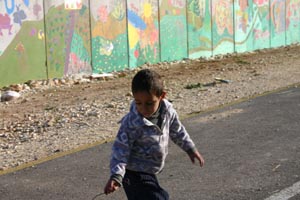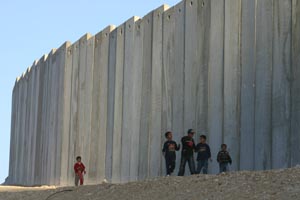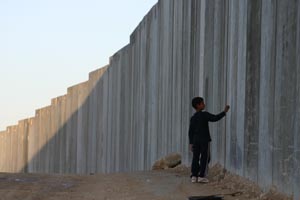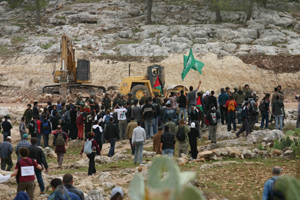The Bethlehem Gate
The City of Bethlehem where Jesus was born, remade into a walled Ghetto by the state of Israel.
A length of the Wall that separates East Jerusalem from the neighboring Palestinian town of Abu Dis.
In order to see neighbors and family on the other side of the Wall, Palestinians must make a 45 minute trip around the Israeli settlement of Ma'ale Adumim. For many, it is simply too much. Social life suffers as a result.
Abu Dis Wall At Al-Quds
The Wall placed right on the property of Al-Quds University separating the Palestinian town of Abu Dis from East Jerusalem. Many faculty members and students at Al Quds University live in East Jerusalem which normally might be a 5-10 minute drive to the campus. Now as a result of the Wall, these faculty members and students must make a 45 minute trip around the Israeli settlement of Ma'ale Adumim in order to get to the campus.
Children opening bags for Israeli soldier in Palestinian city of Hebron
On the night of August 14th, 2006 an Israeli Apache Helicopter launched a missile at a training ground for the An Nasser Salah Addin Brigades in Gaza City. Instead of hitting the training ground, however, this missile hit a car and killed three people including a 3-year old girl, Raja Hassanein. This funeral, taking place in Gaza City, is for the 3-year old girl.
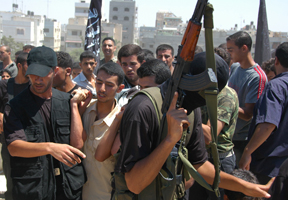
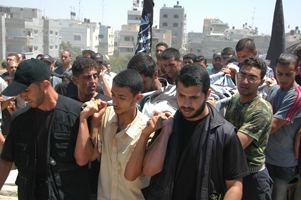
Her father.
The Internment
The celebrated Huwara Checkpoint near Nablus. There are roughly 300 checkpoints inside Palestine. Of all the checkpoints, Huwara is reputed to be one of the most onerous on Palestinians.
Running through the farmland of Jayous is an 80 meter wide zone with an electrified fence down the center and razor wire on each side.
The International Court of Justice (ICJ) calls this zone a wall.
This wall prevents the Palestinian farmers of Jayous from accessing their own land without having to first pass through an Israeli checkbpoint.
Farmers from the Palestinian town of Jayous walking at dawn to the Gate in the Wall that will enable them to pass to their own land.
40% of the farmers of Jayous are unable to obtain the necessary permits to pass the checkpoint to their own land.
Farmer from Jayous getting his ID checked by Israeli army forces before passing through the Jayous gate in the Wall to work his farm.
On December 11, 2004 settlers from the Jewish settlement of Zufim adjacent to the Palestinian town of Jayyous hired a construction crew to uproot and bulldoze olive trees belonging to Palestinian farmer Tawfiq Hasan Salim.These trees were 200 years old. The red roofs of the settlement of Zufim, that ordered the demolition, stand in the background.
The settlement of Zufim wanted to expand and decided that land belonging to Mr. Salim would be the most suitable for expansion. Uprooting and demolition of olive trees is a daily occurrence in Palestine. In this particular case, the governing council of Zufim, in order to justify the destruction, claimed that Mr. Salim sold his land to the settlement. Such a claim, however, has little credibility. Palestinians would not risk such obvious collaboration with the Israeli Occupation. Mr. Salim disputed as preposterous this claim made by settlers from Zufim.
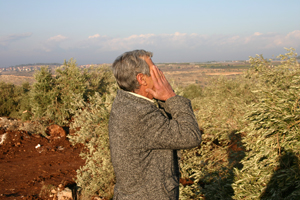
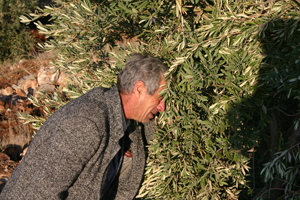
I was with Mr. Salim on the morning of December 12, 2004 when we came upon his bulldozed olive trees. He lost control, crying and screaming at this grotesque crime.
The Palestinian village of Bil'in, 20 kilometers west of Ramallah, has been the site of weekly nonviolent demonstrations against the Wall. Under the leadership of Mohammed Khatib, the local Committee Against the Wall in Bil'in has been the most active and creative of all the local anti-Wall committees during the past 18 monthsThese demonstrations occur every Friday and attract International supporters as well as Israelis.
At virtually every one of these demonstrations, the Israeli army and border police resort to violent tactics against completely nonviolent demonstrators. They fire rubber bullets and live ammunition directly at demonstrators at point blank range and use tear gas and concussion grenades.
Bil'in is also the site where the Israeli army tests new untested weapons on Palestinian demonstrators, some inducing skin rashes and other bodily afflictions.
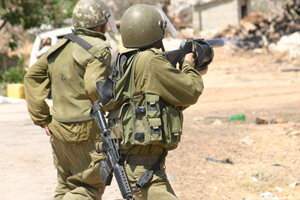
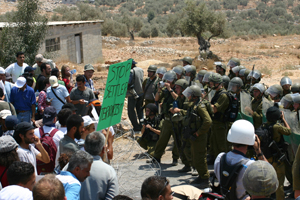
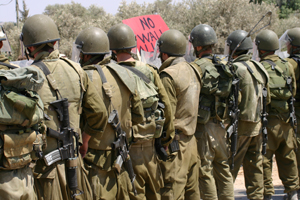
Part of the now completed Wall sealing off the Deheisha refugee camp in Bethlehem.
In July, 2004 Palestinians organized what is still probably the largest demonstration of roughly 3000 people against the Wall in the town of Ar Ram just north of Jersusalem. In the crowd were Palestinians, Israelis, and Internationals. A Palestinian Boy Scout band led the march along a route where prefabricated concrete panels of the Wall were about to be assembled into the final structure.
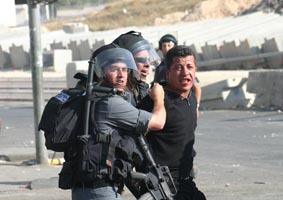
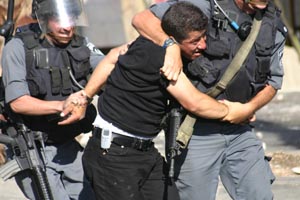
A festive atmosphere prevailed until without warning Israeli army troops hiding up on a hill above the march charged the demonstrators firing teargas concussion grenades, rubber bullets and live ammunition into the crowd. Demonstrators dispersed into nearby shops for cover but that did not stop the Israeli army from locating one of the demonstration organizers, Mohammed Mansour from the Palestinian town of Biddu. I followed them as they went into one of the shops and found Mr. Mansour and watched as six soldiers proceeded to beat him.
The Israelis arrested Mr. Mansour and charged him with beating Israeli soldiers. Some of these photos were used in a court case disproving the outrageous charges. I did not know Mr. Mansour but met him a year later when he thanked me for helping him win his case.
Palestinian woman waiting in the rain to pass Israeli checkpoint in order to go to their homes in the Palestinian city of Jenin.
The Palestinian city of Qalqilya is now completely surrounded by a concrete wall. There are two gates in and out of the city. These photos are at the south gate which is opened by Israeli army personnel who then check residents coming and going. The gates are open only during specific times of the day.
The Wall separating Palestinian towns of Ar Ram, Qalandia, and Beit Hanina near Qalandia checkpoint.
Front end loaders uprooting Palestinian olive trees near the town of Jabara just outside Tulkarem.
The construction of the Wall by the government of Israel inside Palestine has resulted in numerous house demolitions when houses are located in the planned pathway of the structure. In most cases, houses are demolished without compensation. Occasionally, the Israeli Government will offer compensation to Palestinian home owners whose homes lie in the path of the Wall.One such owner who received an offer of compensation was Hani Amer in the town of Mas-Ha. Mr. Amer, however, refused the compensation. Here is how he described what happened: "They pleaded with me to take the money. I told them that I could not even think about money. They told me that I could not imagine the situation I was in and then they left."
What the Israelis did was to completely enclose his property with the wall. They left him one gate which he can lock and unlock but which the Israeli army can also lock and unlock. Here the children of Mr. Amer are playing in what was once his front yard.
The Wall separating the East Jerusalem neighborhood of Bethany from Abu Dis and the rest of East Jerusalem.
In the Palestinian village of Budrus, resistance against the Wall was particularly well organized, led by a very creative individual, Ayad Murar. There were many demonstrations in Budrus and actions of civil disobedience against the Wall. All of these actions were nonviolent. The resistance in Budrus was characterized and distinguished by a very high level of participation among young women from the town.
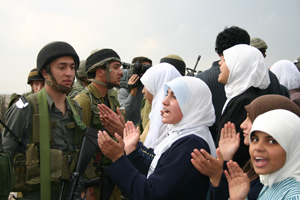
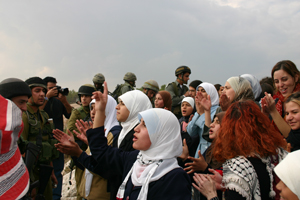
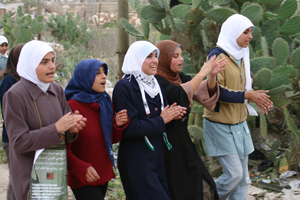
Originally, Israeli authorities intended to seize and confiscate thousands of dunums of land belonging to farmers from the town. Budrus was one of the few places however, where resistance succeeded in driving the Wall from Palestinian land back to the border between Israel and Palestine. Local people did pay a price. Israeli forces killed one person from the village and injured several hundred during these actions.
